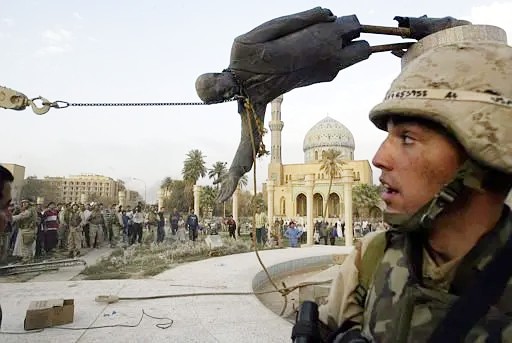On April 9, 2003, the world watched in awe as the statue of Saddam Hussein was toppled in Baghdad’s Firdos Square—a moment that symbolized the collapse of a regime and the dawn of a new, uncertain era for Iraq. The fall of Baghdad marked the culmination of the U.S.-led invasion that began just three weeks earlier, aimed at dismantling Saddam Hussein’s authoritarian rule and eliminating alleged weapons of mass destruction.
Baghdad, once the heart of the Islamic Golden Age and a center of culture and scholarship, had already suffered decades of war and sanctions by the time coalition forces entered its streets. In the weeks leading up to its fall, U.S. and British troops had rapidly advanced through southern Iraq, meeting resistance but overwhelming the Iraqi military. By early April, coalition tanks rolled into the capital, encountering sporadic fighting but little organized defense.
The sudden collapse of the regime stunned observers. Despite predictions of a drawn-out siege, Baghdad fell swiftly, in part due to the demoralization and disintegration of Iraqi forces. Saddam Hussein vanished from public view, and with him went the structures of state authority. What followed was chaos.
In the vacuum left behind, widespread looting, destruction of infrastructure, and lawlessness gripped the city. Ministries, museums, and libraries were ransacked. The National Museum of Iraq, home to some of the world’s oldest artifacts, was gutted in scenes that shocked archaeologists and historians worldwide. Meanwhile, Iraqis, weary of repression, were left to navigate the power vacuum with little support or guidance.
The fall of Baghdad did not bring the stability many had hoped for. It instead ushered in years of insurgency, sectarian violence, and political instability. The failure to secure the city and rebuild institutions allowed armed groups to flourish. The eventual rise of extremist factions like ISIS had roots in the chaos that followed 2003.
Today, the fall of Baghdad remains a deeply symbolic and controversial moment in 21st-century geopolitics. For some, it represented the end of tyranny; for others, the beginning of a tragic and avoidable chapter in Iraq’s history. Over two decades later, Baghdad continues to rebuild, its people resilient, yet bearing the long shadows of war and occupation.
newshub











Recent Comments